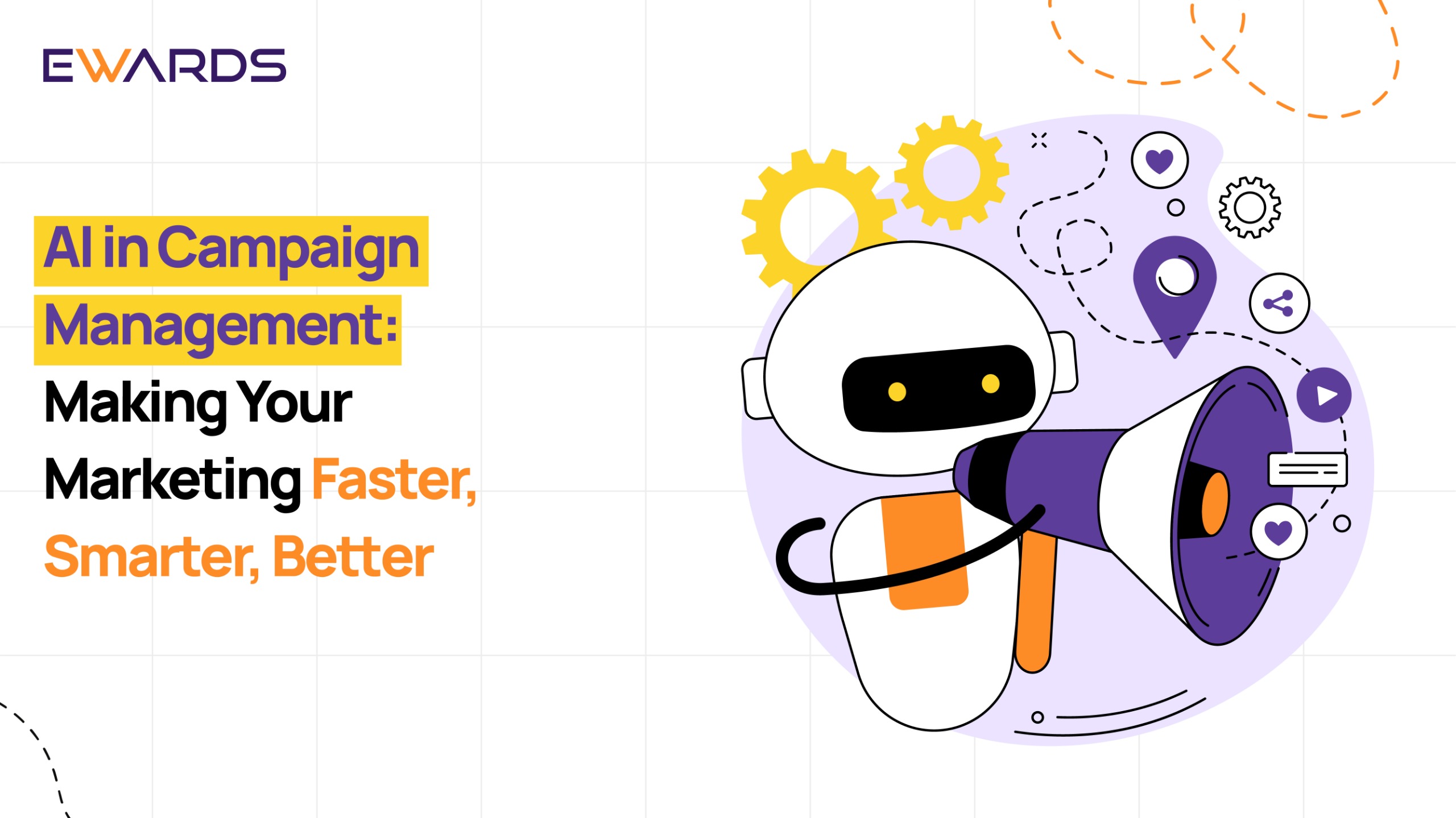
The digital landscape is changing every day. To be competitive and to cater to different consumer behaviors, marketing campaigns need to be on par with industry standards. This highlights that real-time marketing campaign optimization is a necessity because a delay of even a few hours can lead to missed opportunities.
Enter Artificial Intelligence. A tool that has replaced traditional marketing strategies with data-driven decisions and personalization. This shift has led to a surging adoption of AI in marketing. According to the data presented by InfluencerMarketingHub, 69.1% of marketers have integrated AI into their operations, and 88% of them believe that AI is important for expansion and staying competitive (MailChimp).
Thus, AI has changed how marketing campaigns are managed. Instead of gut instinct and manual analysis, marketers can now use continuous data streams and machine learning to adjust campaigns right at the moment.
Let’s dive into how AI in marketing campaigns is a boon for Marketers.
Issues with Traditional Marketing Campaign Optimization
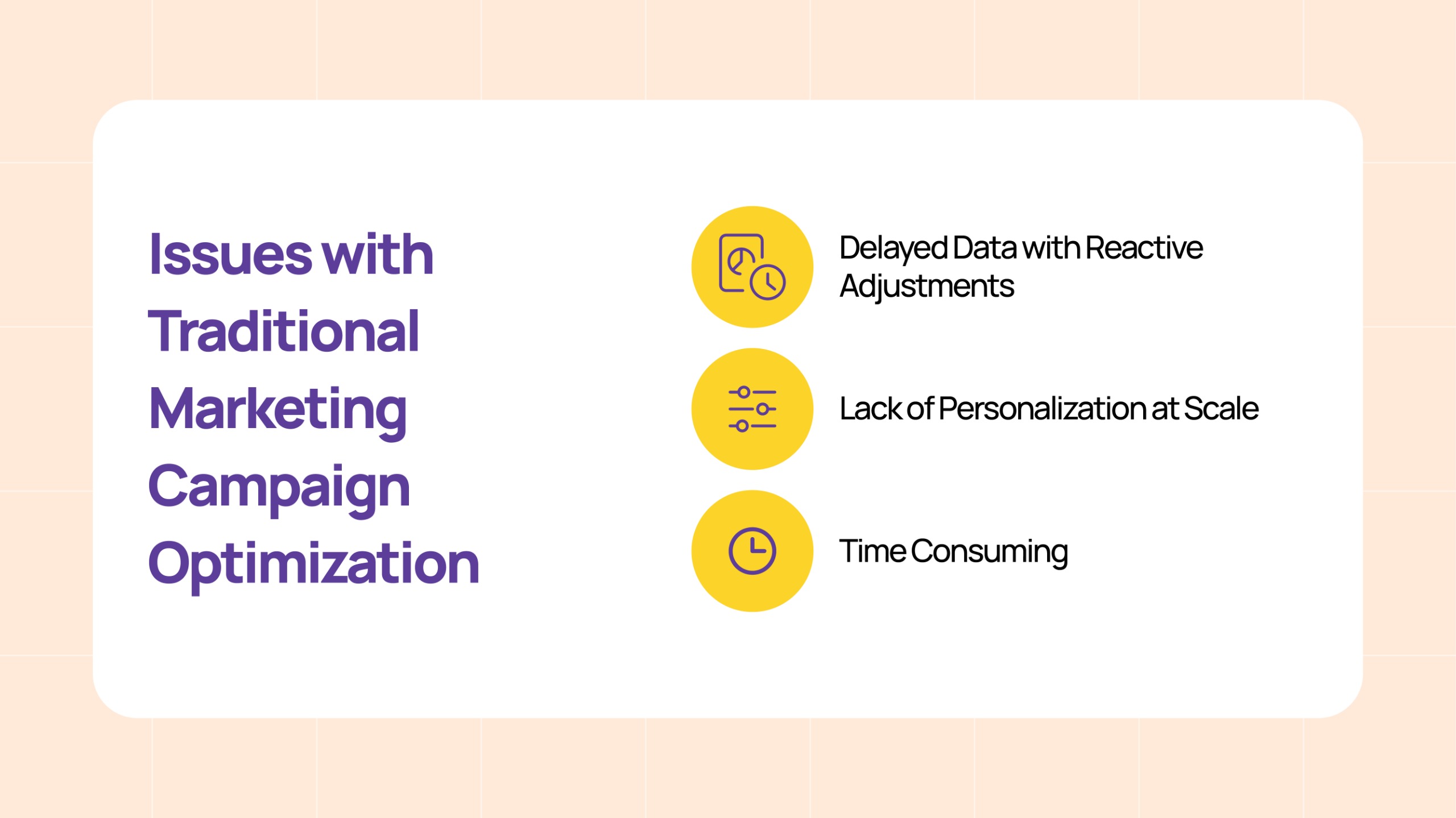
Before the introduction of AI, marketers faced several challenges that hindered timely and effective campaign optimization. Some of the issues faced by marketers with traditional optimization methods included:
- Delayed Data with Reactive Adjustments: Traditional campaigns relied on manual reports. By the time human analysts crunch the numbers and conclude, there is a possibility that the marketing landscape will have changed, leading to a slow response. This means that the analysis becomes a bottleneck instead of being an enabler.
- Lack of Personalization at Scale: Personalization is a key component for enhanced customer experience, which was a cumbersome task for traditional marketers. The major reason behind this issue was coarse segmentation and generic messaging. This was a significant challenge considering that 80% of worldwide customers shop with companies that provide personalized experiences (Epsilon), and doing this for every individual in real time was practically impossible.
- Time-Consuming: The Optimization of campaigns with human intervention included a lot of hit-and-trial techniques where marketers would manually adjust the bid, swap out the creatives, and segment the customers, often based on limited customer analysis. These tasks were not just time-consuming but were also prone to human errors and bias. Thus, the traditional campaign optimization allowed individuals to focus only on a few variables at a time.
These challenges left traditional marketing optimization reactive, imprecise, and inefficient, where marketers often found themselves a step behind their customers. It felt like they were reacting to last quarter’s data instead of influencing the current moment.
Thus, Campaigns were optimized in hindsight, personalization was minimal, and valuable time and budget were lost due to slow pivots and blanket messaging.
How AI Optimizes Marketing Campaigns in Real-Time
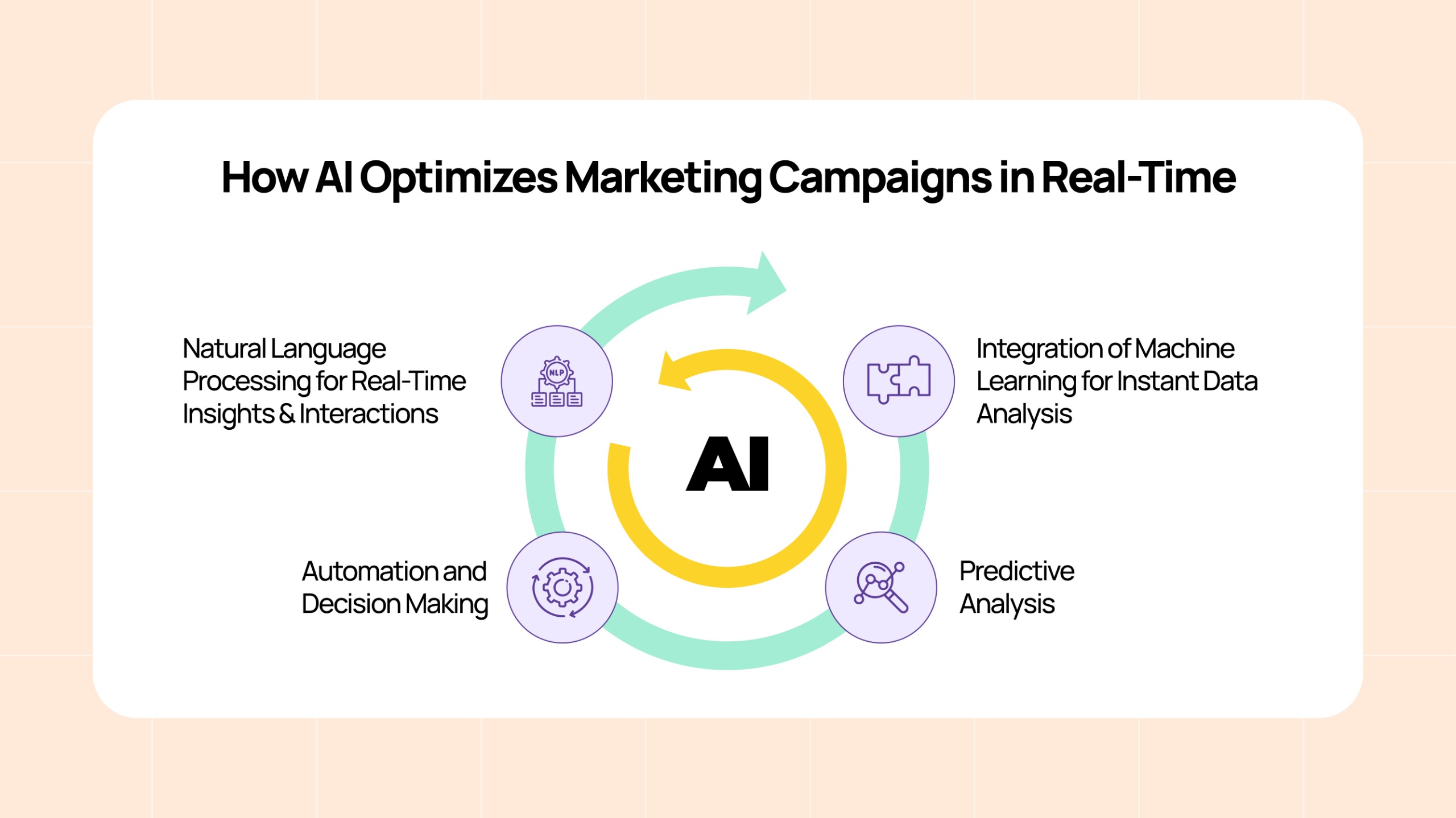
AI has transformed campaign optimization from a slow, manual approach to a fast, automated, and ongoing process. Some of the strategies to achieve the same are:
- Integration of Machine Learning for Instant Data Analysis: AI-driven marketing makes use of ML algorithms that can learn from existing data and make predictions based on them. For instance, ML models can analyze millions of data points across dozens of signals in real-time. This shows that AI is faster than manual optimization and can also discover patterns that humans might miss and act upon. Thus, the concept of real-time optimization has changed the entire marketing strategy, where instead of acting upon yesterday’s results, AI can analyze and respond to changes in data as they happen.
- Predictive Analysis: With the help of trained ML models, AI can predict future trends, starting from customer lifetime value to the likelihood of users converting. This technology allows marketers to optimize their campaigns reactively.
- Natural Language Processing for Real-Time Insights & Interactions: NLP is a branch of AI that understands and generates human language, whereby it powers everything from social media tools to chatbots. In this, AI can analyze unstructured data in real-time to understand sentiments and spot trends. For example, an NLP system might scan thousands of social posts about a product launch and immediately alert marketers if sentiment is turning negative, enabling an instant response or PR fix.
- Automation and Decision Making: One of the major aspects of real-time optimization is AI-driven automation and decision-making at a rapid pace. AI automation can make thousands of micro-decisions and adjustments per second, which is impossible for humans to achieve. Consider an example of real-time programmatic advertising– In this, AI algorithms set and adjust bids for each ad impression in milliseconds, something known as “true auction-time optimization”. Google Ads’ Smart Bidding is a prime example, using machine learning to optimize bids for each individual auction based on a wide range of signals. Humans might adjust bids a few times a week; AI does it for every single user, every moment, maximizing efficiency.
Key AI-Driven Tools for Real-Time Marketing
Numerous AI-powered tools and platforms have come into existence to help marketers optimize campaigns. Some of the top AI-driven tools and technologies are mentioned below:
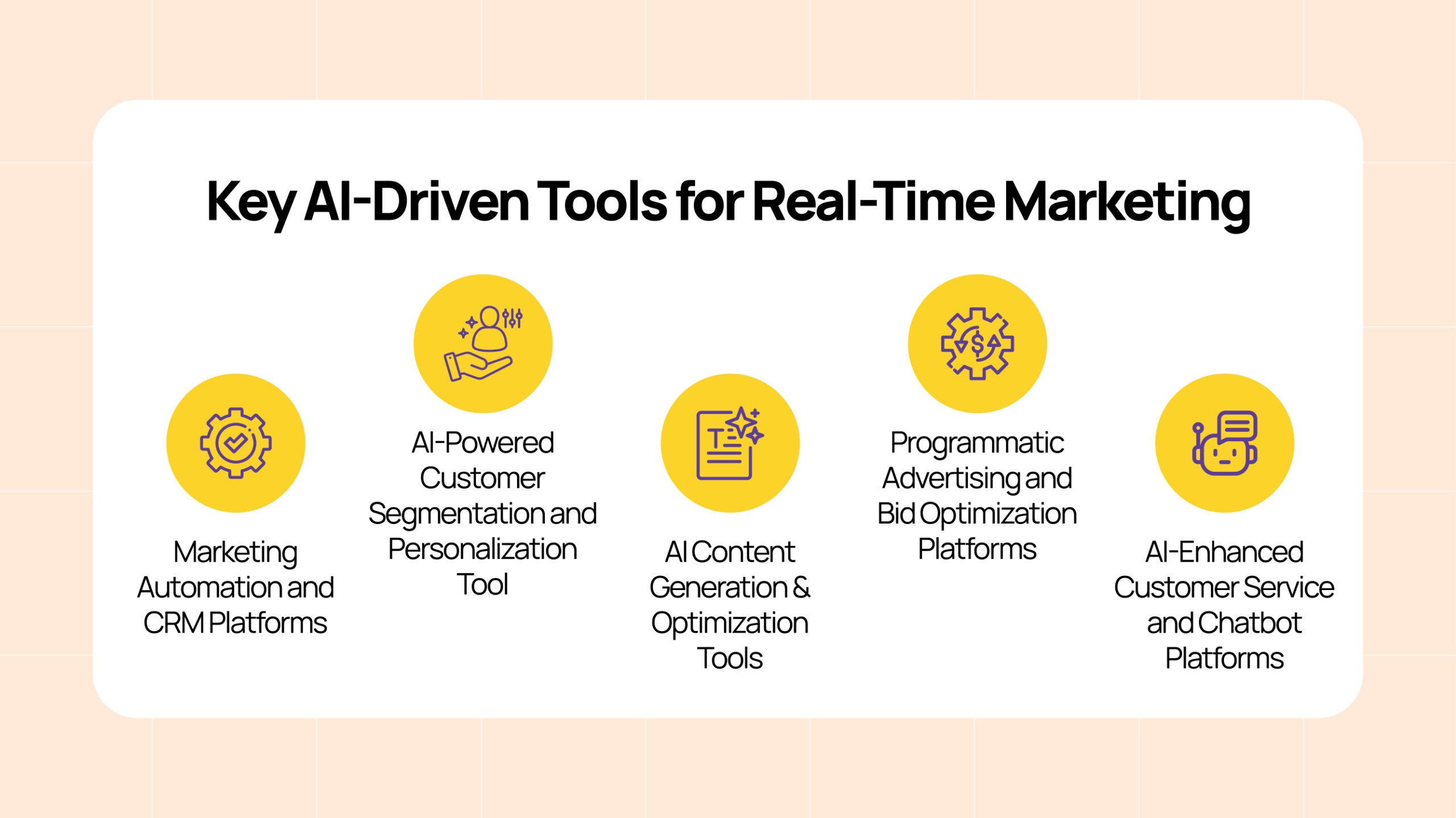
- Marketing Automation and CRM Platforms: The top marketing clouds and CRM systems have incorporated AI to drive real-time decisions where CRM platforms unify the customer data and apply AI models on them so that every email, push notification, and website experience can be tailored in real-time. Even eWards has introduced InsightX, an AI-powered marketing intelligence engine that analyzes real-time customer data, uncovers actionable trends, and delivers precise recommendations to optimize your marketing strategy.
- AI-Powered Customer Segmentation and Personalization Tool: One of the major challenges of real-time marketing is handling customer data from many channels and updating segments or recommendations dynamically. AI-driven customer data platforms (CDPs) and personalization engines help solve this. They can achieve this by merging data streams and continuously segmenting customers on the basis of their behavior. With the use of clustering algorithms, they can come up with personas and give the best targeting criteria to the marketers.
- AI Content Generation & Optimization Tools: Crafting effective marketing content (ad copy, emails, social posts) and testing variations can be resource-intensive. AI-driven content tools address this by generating and optimizing creative elements in real-time. These tools analyze which words, emotions, and calls-to-action drive the best response and can autonomously test and refine copies. For instance, a well-known case is JPMorgan Chase’s use of Persado, where the bank found that an AI-written ad copy yielded significantly higher click-through rates than a human-written copy.
- Programmatic Advertising and Bid Optimization Platforms: Real-time bidding (RTB) in digital ads was the first field to make use of AI, and today, virtually all major ad platforms have AI under the hood. Google Ads, for instance, offers Smart Bidding strategies (like Target CPA, Target ROAS, and the fully automated Performance Max campaigns) that leverage AI to set bids and allocate budget across search, display, YouTube, etc. In this, AI optimizes conversions or revenue by learning from conversion data and adjusting bids for each auction in milliseconds. This means marketers no longer manually tweak keywords or bids. For instance, L’Oréal Vietnam used Google’s AI-driven Performance Max and saw a 4.1X higher return on ad spend and a 13X increase in conversion rate compared to its previous campaign.
- AI-Enhanced Customer Service and Chatbot Platforms: As part of the marketing and CRM toolkit, AI chatbots and virtual assistants play a huge role in real-time engagement. These tools make sure that when a customer comes on to your website or Facebook page with a question, they get instant answers and personalized guidance, which, in turn, can significantly boost conversion and satisfaction. With the advancement of cutting-edge technologies, chatbots use NLP to understand queries and connect with backend systems to give relevant responses. They can qualify leads, upsell customers by recommending products, or recover potentially lost sales.
Therefore, each of these tools leverages AI in a specific way, but they all contribute to the same end goal: making marketing campaigns more responsive, personalized, and data-driven in real-time.
Impact of AI on Campaign Performance
So, is the AI hype actually translating into better marketing outcomes? According to a growing body of research and industry reports, the answer is a resounding yes.
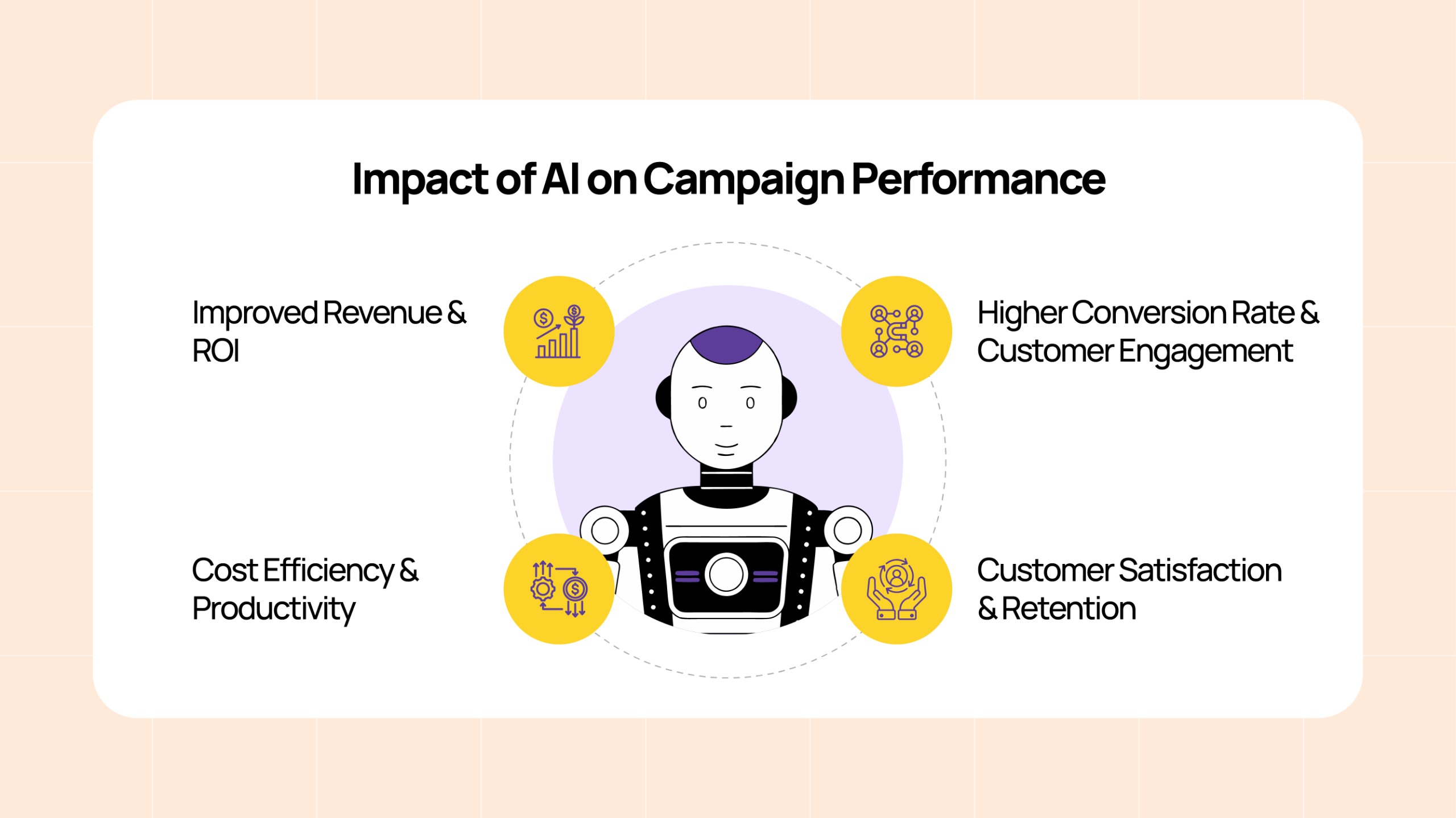
Let’s dive into some data and metrics which is impacted by AI-powered campaign performance:
- Improved Revenue & ROI
Companies adopting AI in marketing are seeing notable gains in return on investment. This is because AI finds optimization opportunities (lowering costs, and boosting conversions) that directly improve ROI. A study by ProfileTree shows that businesses that use AI for marketing experience an average 39% increase in revenue and a 37% reduction in cost. This is mostly because AI allows more sales from the same marketing spend by targeting the right customers with the right message at the right time.
- Cost Efficiency & Productivity
As already mentioned, AI helps in cost reduction. These savings come from various efficiencies like automating tasks that would have required headcount optimizing ad spending to avoid waste or reducing customer acquisition costs by improving targeting. For instance, an AI content generator can save hours of copywriting time, or an AI analytics dashboard might eliminate the need for manual data pulls and spreadsheet work. This efficiency helps the teams reallocate time to more strategic or creative initiatives, enhancing overall productivity.
- Higher Conversion Rate & Customer Engagement
When content resonates more with each individual, they respond at higher rates. According to an Accenture study, 91% of consumers are more likely to shop with brands that provide personalized offers and recommendations, and AI has the ability to personalize and optimize in real-time, which leads to better conversion and engagement metrics.
- Customer Satisfaction & Retention
Effective marketing is not just about acquisition, but it is also about keeping customers happy and loyal. A study by Gartner has shown that by deploying chatbots and AI service agents, companies tend to see improved customer satisfaction scores because it helps them deal with issues faster and more consistently, which makes the customers stay loyal. For instance, Netflix is reducing customer churn with AI-based recommendations.
Conclusion
In marketing, timing is the key, and AI makes sure that you don’t miss a beat. By using AI-powered real-time optimization, marketers can deliver personalized, relevant experiences right when customers need them. So the next time you think about marketing, remember: with AI, it’s all about making the right move at the right time.